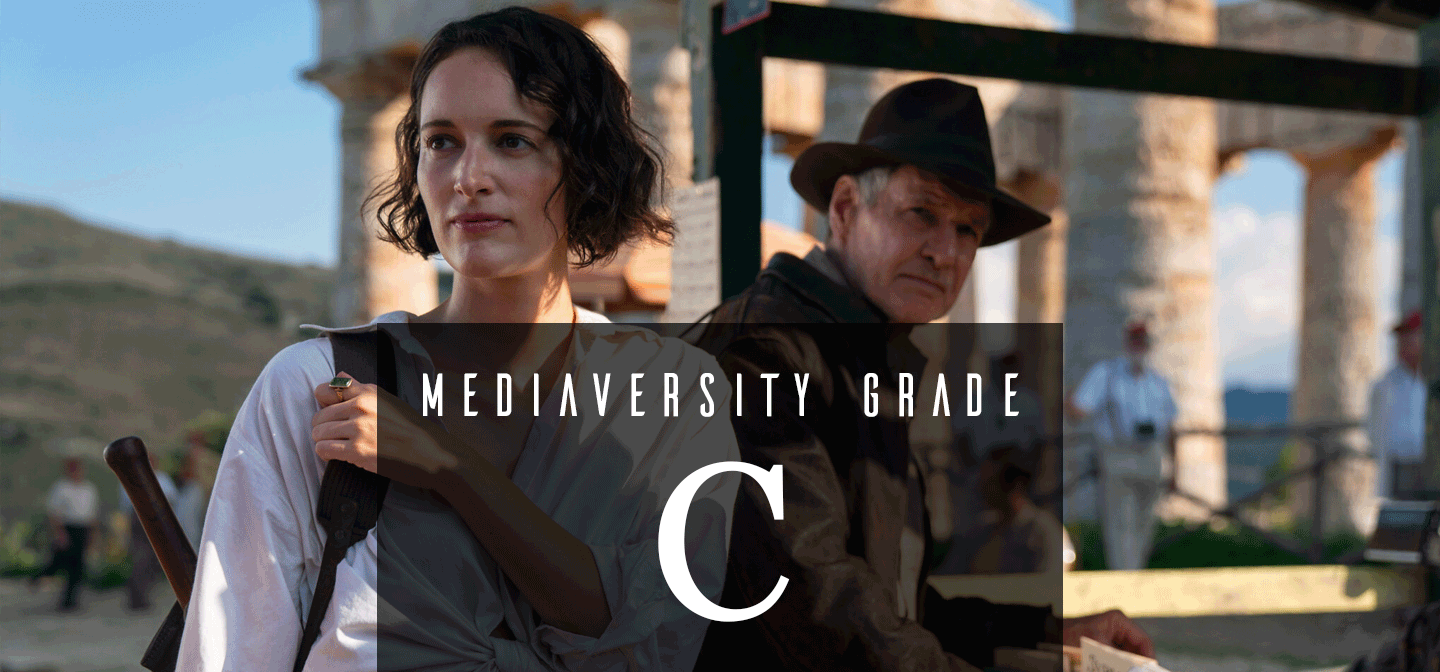Indiana Jones and the Dial of Destiny
“Indiana Jones and the Dial of Destiny fulfills its don’t-cancel-me quota and phones in the rest.”
Title: Indiana Jones and the Dial of Destiny (2023)
Director: James Mangold 👨🏼🇺🇸
Writers: Jez Butterworth 👨🏼🏴, John-Henry Butterworth 👨🏼🏴, David Koepp 👨🏼🇺🇸, and James Mangold 👨🏼🇺🇸
Reviewed by Li 👩🏻🇺🇸
—MILD SPOILERS AHEAD—
Technical: 3.5/5
I can’t say that I needed another Indiana Jones installment, but now that Dial of Destiny is here, it’ll do. Directed by James Mangold (Ford v. Ferrari, Logan), the film falls in line with franchise expectations: entertaining action, solid pacing, and a few chuckles interspersed throughout the kid-friendly blockbuster. Better yet, the days of yester-cringe—of eye-watering racism and it-was-okay-in-the-‘80s sexism—have worn away to just a blueprint, rather than the full 3D render.
This isn’t to say that everything works. Lengthy scenes featuring a digitally de-aged Harrison Ford distract from the plot. (Whether or not the visual effects succeed is beside the point, because viewers have already spent too much time scrutinizing Ford’s rendered face for the gimmick to have done its job.) And the rest of the movie is painfully formulaic, down to its recycled Nazi villains. But if you’re just looking for an excuse to while away a few hours in an air-conditioned room, then this action-packed addition to the Indiana Jones universe won’t disappoint.
Gender: 3.5/5
Does it pass the Bechdel Test? NOPE
When it comes to updating the franchise from a social standpoint, Mangold and his three (also male) co-writers do the bare minimum. Dial of Destiny adds Phoebe Waller-Bridge into the role of Helena, Indy’s goddaughter who crashes into his quietly unhappy life and drags the retired professor into a new adventure. Waller-Bridge tackles the role with aplomb, infusing her signature blend of English pep and quirkiness into a character who gets plenty of heart-racing stunts, from leaping onboard an airplane mid-flight, to diving underwater chased by squirming, hungry eels. It’s wonderfully refreshing to see her play the rakish rogue previously assumed by Indy, as she leaves broken hearts in her wake. Crucially, her sexuality exists without hypersexualization—a camera that focuses on her face and refrains from lewdly panning across her body helps in this arena, as does costuming that allows her to wear practical footwear as she runs, jumps, and rolls her way through peril.
But the “she can hang with the boys” checkbox is one that’s been around for decades. It’s precisely this framing—of leaning into traditionally masculine traits of gumption, rule-breaking, and athleticism in order to portray a woman as “strong”—that feels quaint. A Token Female™ if there’s ever been one, Helena spends the entirety of the film’s 2 hour and 24 minute runtime surrounded by men and boys, and in no spare moment does she share lines with another woman.
Other female characters hardly warrant a mention: U.S. government agent Mason (Shaunette Renée Wilson) is glaringly the only woman of color in the film with any dialogue, and she’s portrayed as an ineffectual hindrance to the film’s white heroes. Indy’s flame Marion (Karen Allen) returns in a symbolic role, given more space as a black-and-white photograph than as a living, breathing human being.
A glance behind the camera reveals an unsurprising story. Written, directed, edited, and art directed by an entirely male roster, with mostly male producers orchestrating it all, it’s no wonder the film fulfills its don’t-cancel-me quota and phones in the rest.
Race: 2/5
Ah, Nazis. Timeless, yet forever timely Nazis. Thanks to the depressing resilience of white supremacy, modern movie studios grasping for a wide audience still get to safely villainize this category of humans, and Dial of Destiny homes in on the low-hanging fruit. Who doesn’t want to punch a Nazi?
That doesn’t mean the characters of color in positive and neutral roles get to go unexamined. While the film does avoid the more obvious Orientalist fearmongering seen in past films, portrayals of North Africans remain stereotypical. The lovable young Moroccan, Teddy (played by French actor Ethann Isidore of Franco-Mauritian-Brazilian descent), plays a two-dimensional helper to the white character of Helena. And white Welsh actor John Rhys-Davies casually reprises his brownface role as Indy’s Egyptian friend Sallah, tarboosh hat and all.
Some of the above portrayals can be explained, if not excused, by the writers relying too much on problematic source material. Teddy is clearly cut from the same cloth as beloved sidekick Short Round (Ke Huy Quan) in 1981’s Raiders of the Lost Ark, and Sallah’s whitewashed casting (and prop-like tarboosh) carries over from The Last Crusade (1989). Less logical is why, today, a group of writers thought it was okay to cast only one dark-skinned actor (Wilson, who’s Guyanese-born American) into a speaking role, despite several scenes taking place in diverse areas like North Africa, Spain, and New York City. And then (spoiler alert!) let’s not forget that her plot arc abruptly ends when she’s shot and killed, halfway through the movie. Granted, several characters die in Dial of Destiny, making the death slightly less offensive—but it smacks of a predominately white production team when no one thought (or was empowered enough) to raise their hand and suggest it might be a bit on the nose to kill the film’s only woman of color and only dark-skinned character.
Mediaversity Grade: C 3.00/5
In more ways than one, Mangold’s Indiana Jones and the Dial of Destiny does just the bare minimum. It primly steps over the low bar it set for itself, making for a fun-enough two and a half hours that you’ll likely soon forget.




